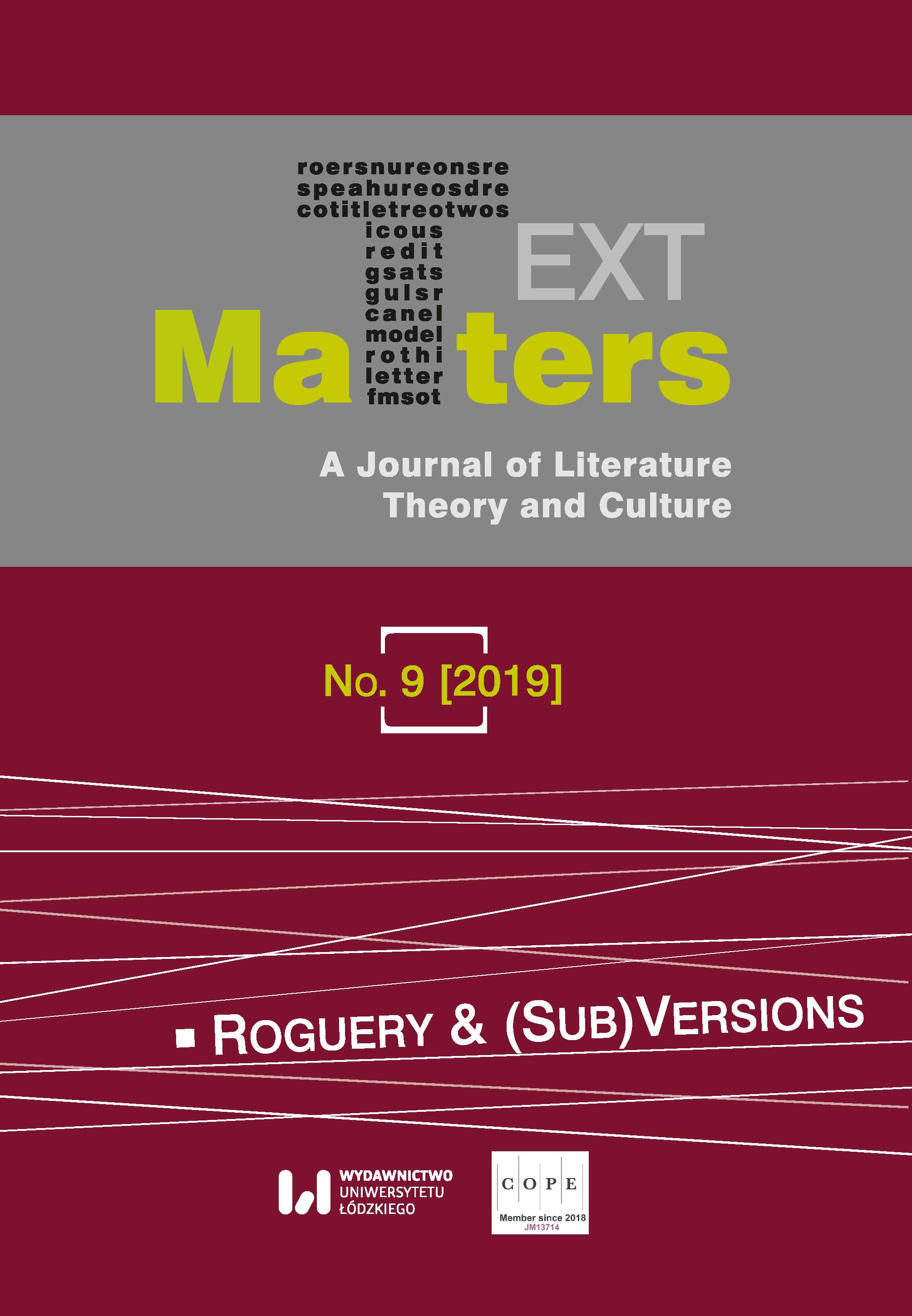What Ever Happened to My Peace of Mind? Hag Horror as Narrative of Trauma
DOI:
https://doi.org/10.18778/2083-2931.09.19Keywords:
Grande Dame Guignol, hag horror, trauma theory, GothicAbstract
In his pioneering study of Grande Dame Guignol (also referred to as hag horror or psycho-biddy), a female-centric 1960s subgenre of horror film, Peter Shelley explains that the grande dame, a stock character in this form of cinematic expression, “may pine for a lost youth and glory, or she may be trapped by idealized memories of childhood, with a trauma that haunts her past” (8). Indeed, a typical Grande Dame Guignol female protagonist/antagonist (as these two roles often merge) usually deals with various kinds of traumatic experiences: loss of a child, domestic violence, childhood abuse, family conflicts or sudden end of career in the fickle artistic industry, etc. Unable to cope with her problems, but also incapable of facing the inevitable process of aging and dying, she gradually yields to mental and physical illnesses that further strengthen the trauma and lead to her social exclusion, making her life even more unbearable. Unsurprisingly, scholars such as Charles Derry choose to name psycho-biddies horrors of personality, drawing attention to the insightful psychological portrayal of their characters. Thus, it would be relevant and illuminating to discuss films such as Die! Die! My Darling! (1965) and Whoever Slew Auntie Roo? (1971) as narratives of trauma. This will be the main concern of my article.
Downloads
References
Butler, Paul. Rev. of Whoever Slew Auntie Roo?, by Curtis Harrington. Allmovie.com. AllMovie. Web. 20 May 2019.
Google Scholar
Caruth, Cathy. “Trauma and Experience: Introduction.” Trauma: Explorations in Memory. Ed. Cathy Caruth. Baltimore: The Johns Hopkins UP, 1995. 3–12. Print.
Google Scholar
Craps, Stef. “Beyond Eurocentrism: Trauma Theory in the Global Age” The Future of Trauma Theory: Contemporary Literary and Cultural Criticism. Ed. Gert Buelens, Samuel Durrant and Robert Eaglestone. London: Routledge, 2014. 45–62. Print.
Google Scholar
Derry, Charles. Dark Dreams 2.0: A Psychological History of the Modern Horror Film from the 1950s to the 21st Century. Jefferson, NC: McFarland, 2009. Print.
Google Scholar
Die! Die! My Darling! Dir. Silvio Narizzano. Perf. Tallulah Bankhead, Stefanie Powers. Columbia Pictures Corporation/Hammer Film Productions, 1965. Film.
Google Scholar
Elm, Michael, Kobi Kabalek, and Julia B. Köhne. “Introduction: The Horrors of Trauma in Cinema.” The Horrors of Trauma in Cinema: Violence Void Visualization. Ed. Michael Elm, Kobi Kabalek and Julia B. Köhne. Newcastle upon Tyne: Cambridge Scholars, 2014. 1–29. Print.
Google Scholar
Hardy, Phil. The Aurum Film Encyclopedia of Horror. London: Aurum, 1993. Print.
Google Scholar
Hogle, Jerrold E. “History, Trauma and the Gothic in Contemporary Western Fictions.” The Gothic World. Ed. Glennis Byron and Dale Townshend. London: Routledge, 2014. 72–81. Print.
Google Scholar
Kaplan, E. Ann. Trauma Culture: The Politics of Terror and Loss in Media and Literature. New Brunswick: Rutgers UP, 2005. Print.
Google Scholar
“Ladies of the Grand Guignol. An Essay on Actress Exploitation Films of the 1960 and 1970s.” Terrortrap.com. The Terror Trap. Web. 20 May 2019.
Google Scholar
Lowenstein, Adam. Shocking Representation: Historical Trauma, National Cinema, and the Modern Horror Film. New York: Columbia UP, 2005. Print.
Google Scholar
Mathijs, Ernest, and Jamie Sexton. Cult Cinema: An Introduction. Oxford: Wiley-Blackwell, 2011. Print.
Google Scholar
Maxford, Howard. Hammer Complete: The Films, the Personnel, the Company. Jefferson, NC: McFarland, 2019. Print.
Google Scholar
Morrison, James. “Shelley Winters: Camp, Abjection, and the Aging Star.” Hollywood Reborn: Movie Stars of the 1970s. Ed. James Morrison. New Brunswick: Rutgers UP, 2010. 120–37. Print.
Google Scholar
Muir, John Kenneth. Horror Films of the 1970s. Jefferson, NC: McFarland, 2002. Print.
Google Scholar
Penner, Jonathan, Steven Jay Schneider, and Paul Duncan. Horror Cinema. N.p.: Taschen, 2008. Print.
Google Scholar
Roche, David. “Exploiting Exploitation Cinema: An Introduction.” Transatlantica. Revue d’études américaines/American Studies Journal [Online] 2 (2015): 1–18. PDF file.
Google Scholar
Shelley, Peter. Grande Dame Guignol Cinema: A History of Hag Horror from “Baby Jane” to “Mother.” Jefferson, NC: McFarland, 2009. Print.
Google Scholar
Smith, Gary A. Uneasy Dreams: The Golden Age of British Horror Films, 1956–1976. Jefferson, NC: McFarland, 2000. Print.
Google Scholar
Whoever Slew Auntie Roo? Dir. Curtis Harrington. Perf. Chloe Franks, Shelley Winters. America International Productions, 1972. Film.
Google Scholar
Downloads
Published
How to Cite
Issue
Section
License

This work is licensed under a Creative Commons Attribution-NonCommercial-NoDerivatives 4.0 International License.













